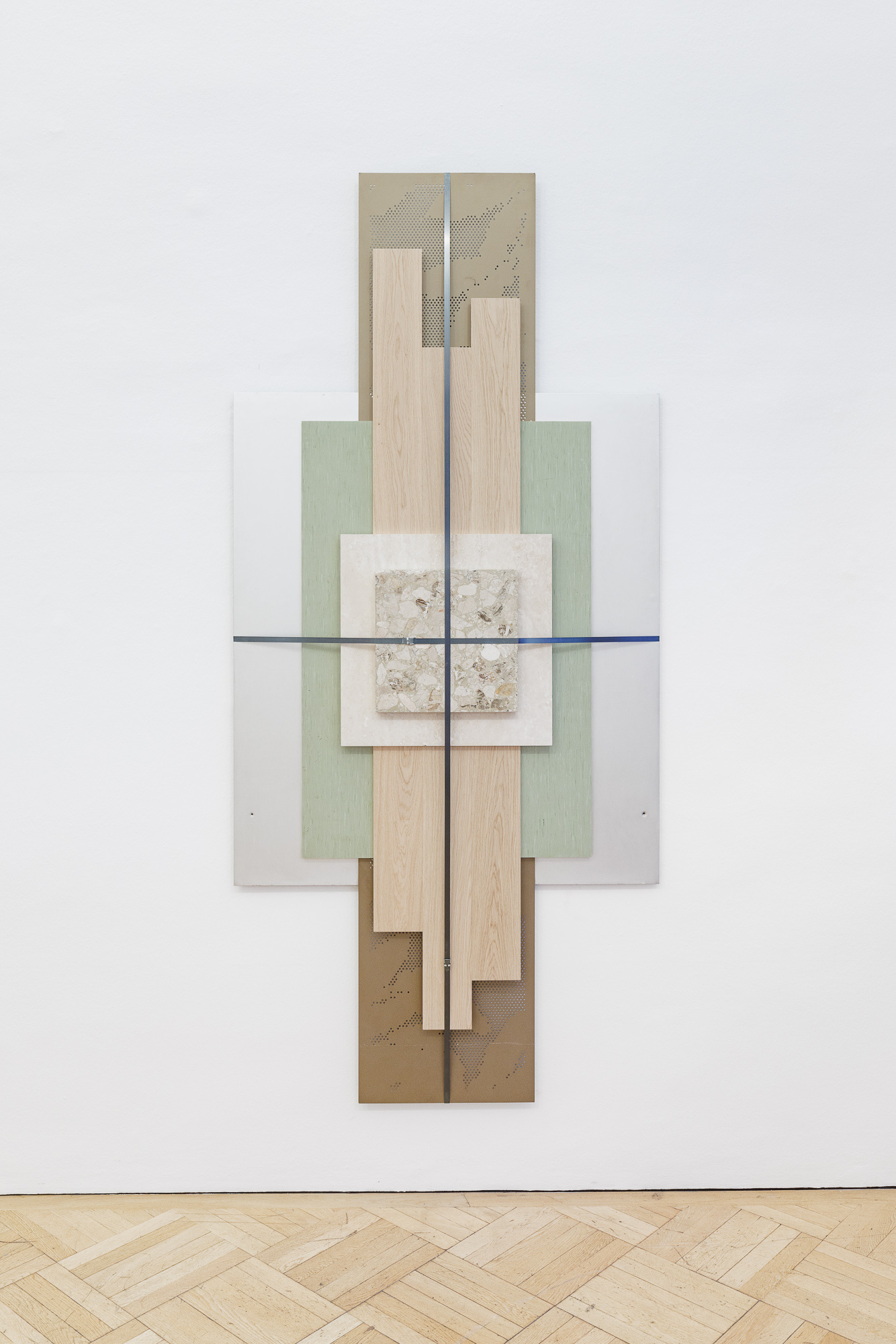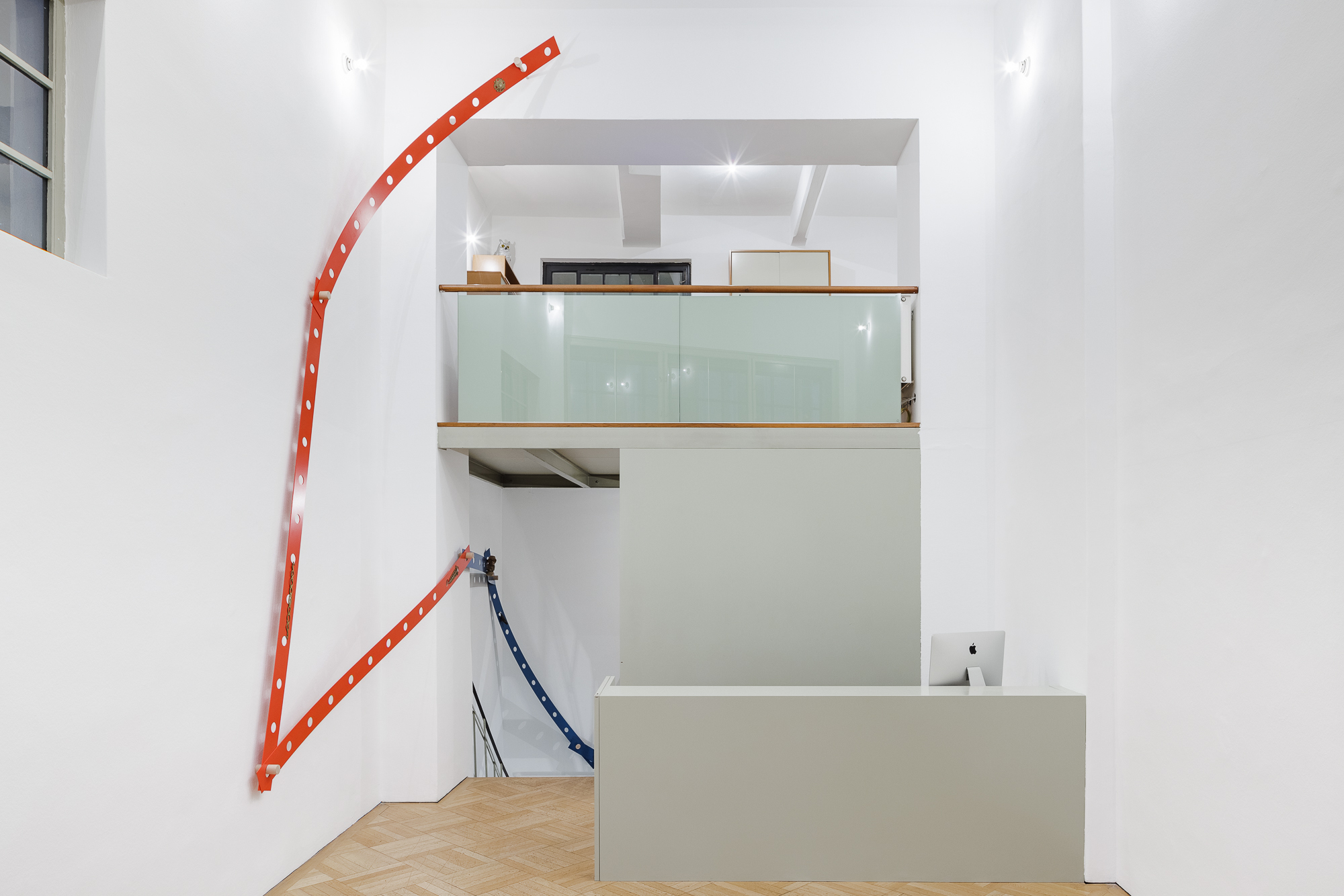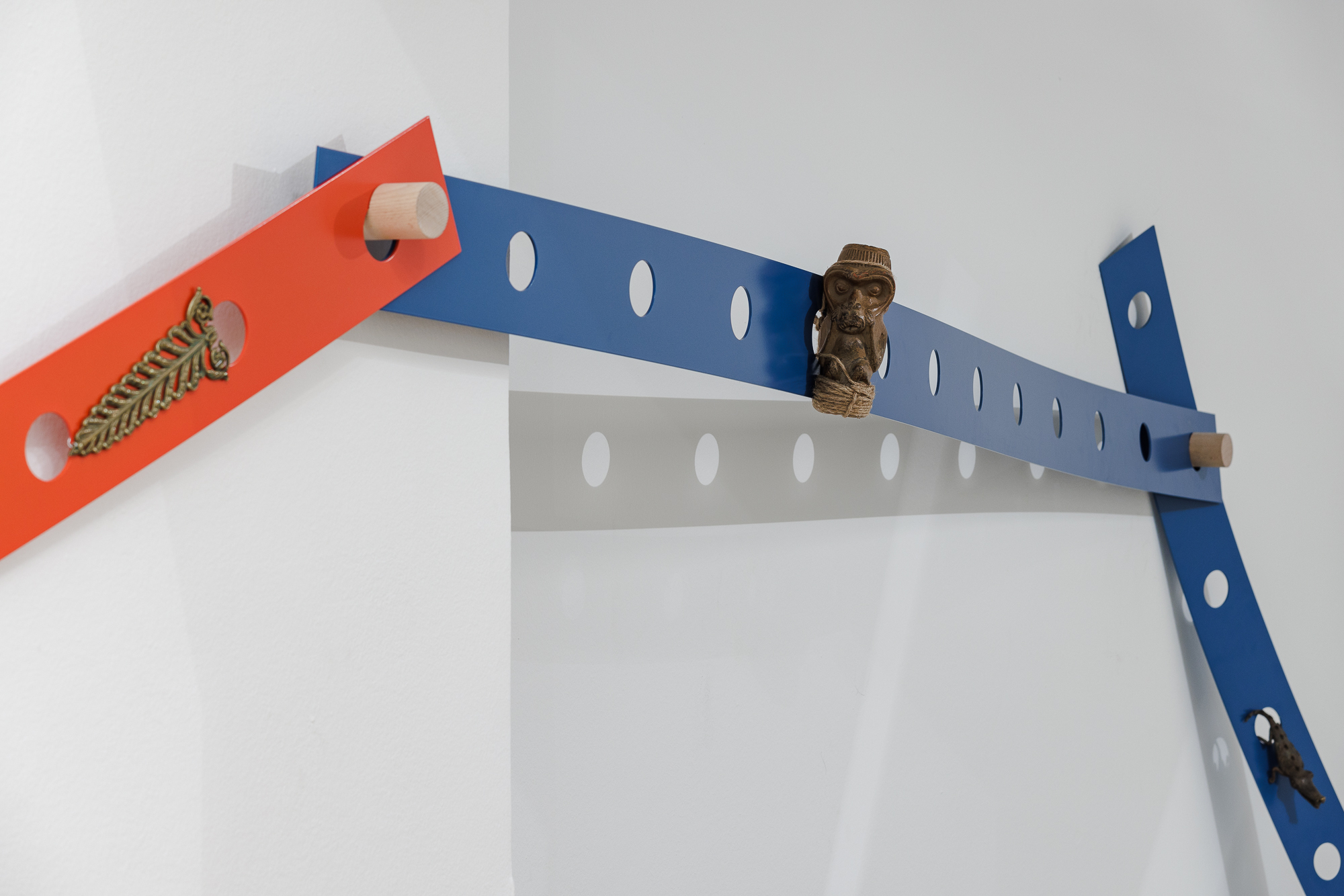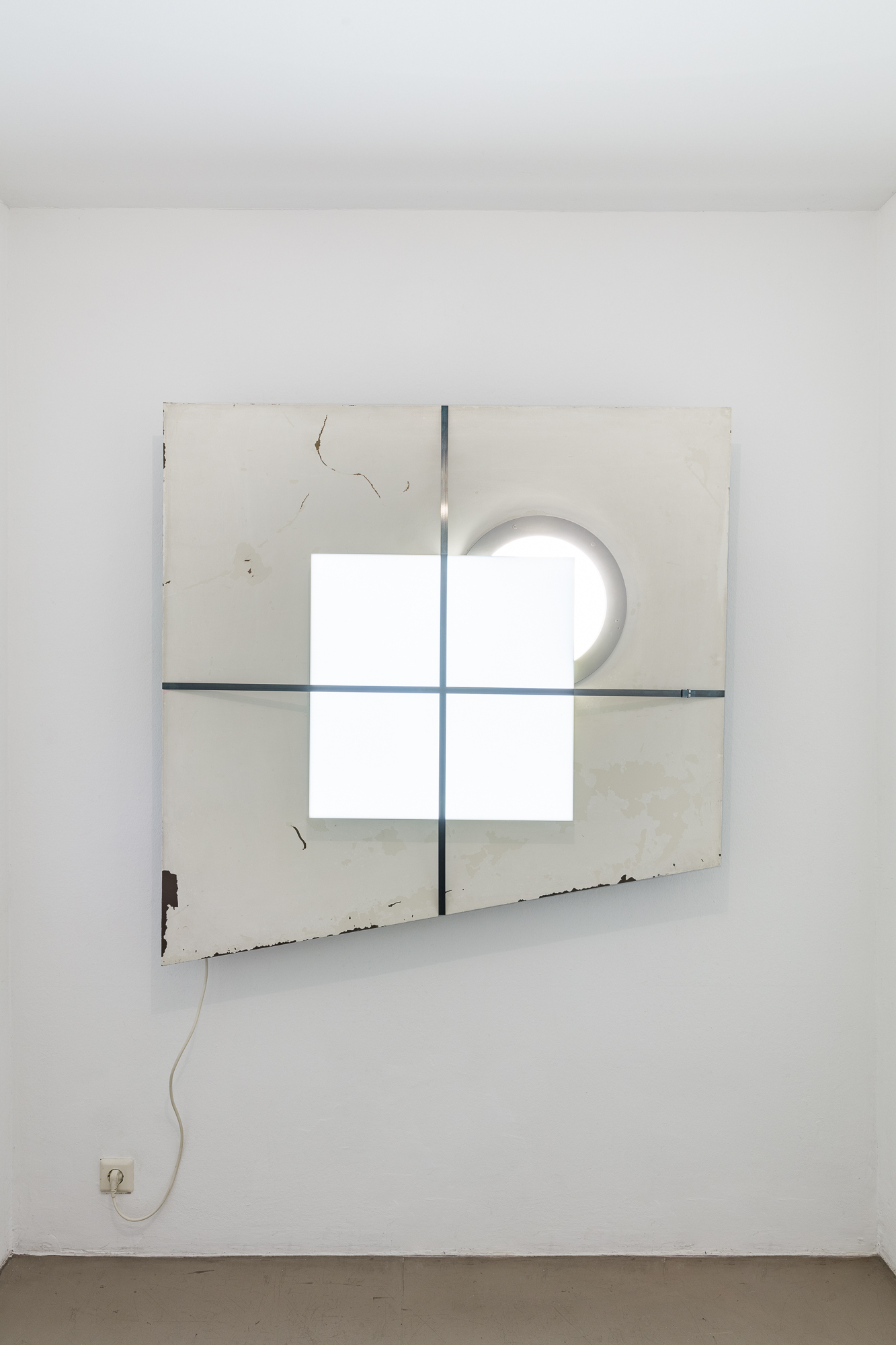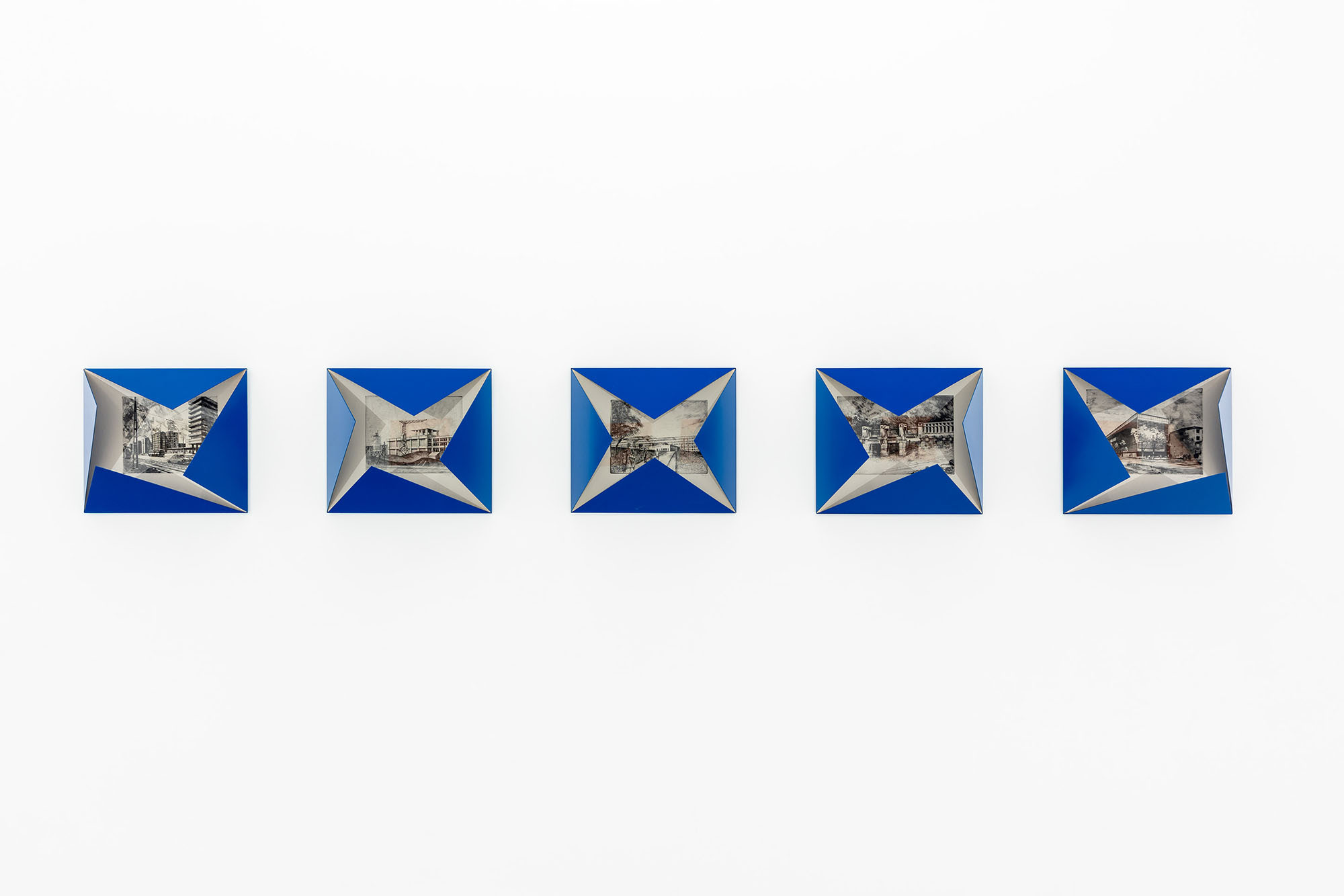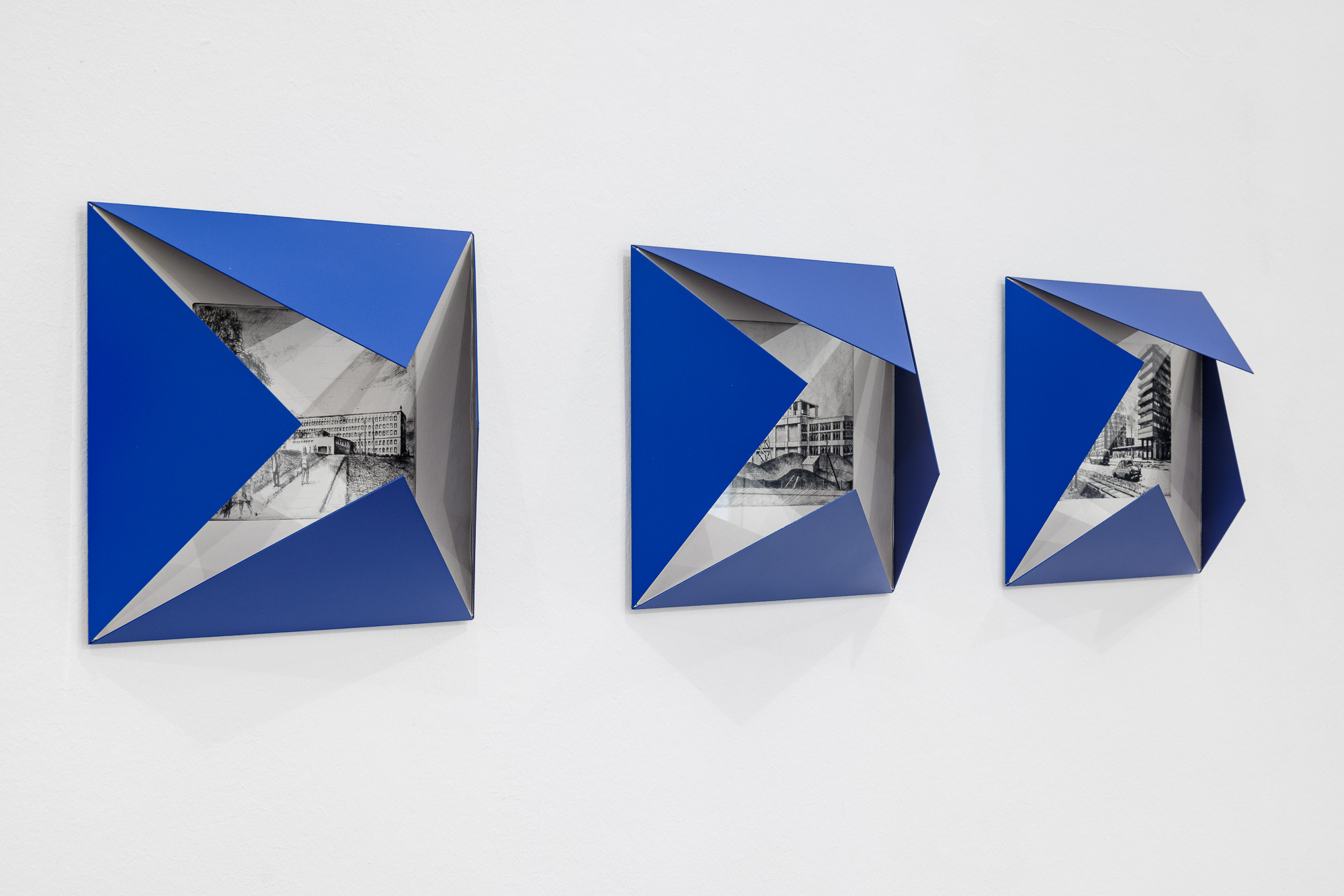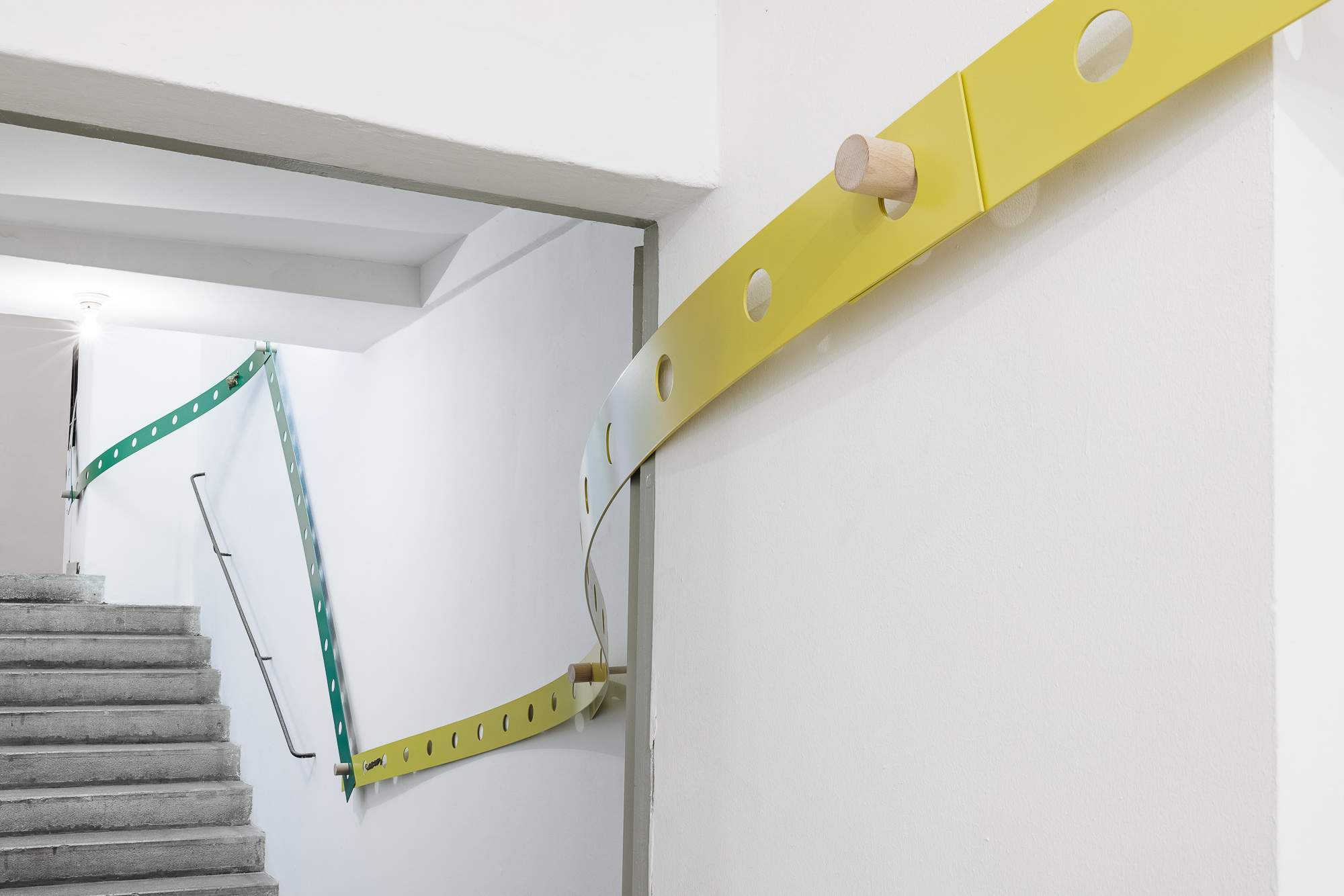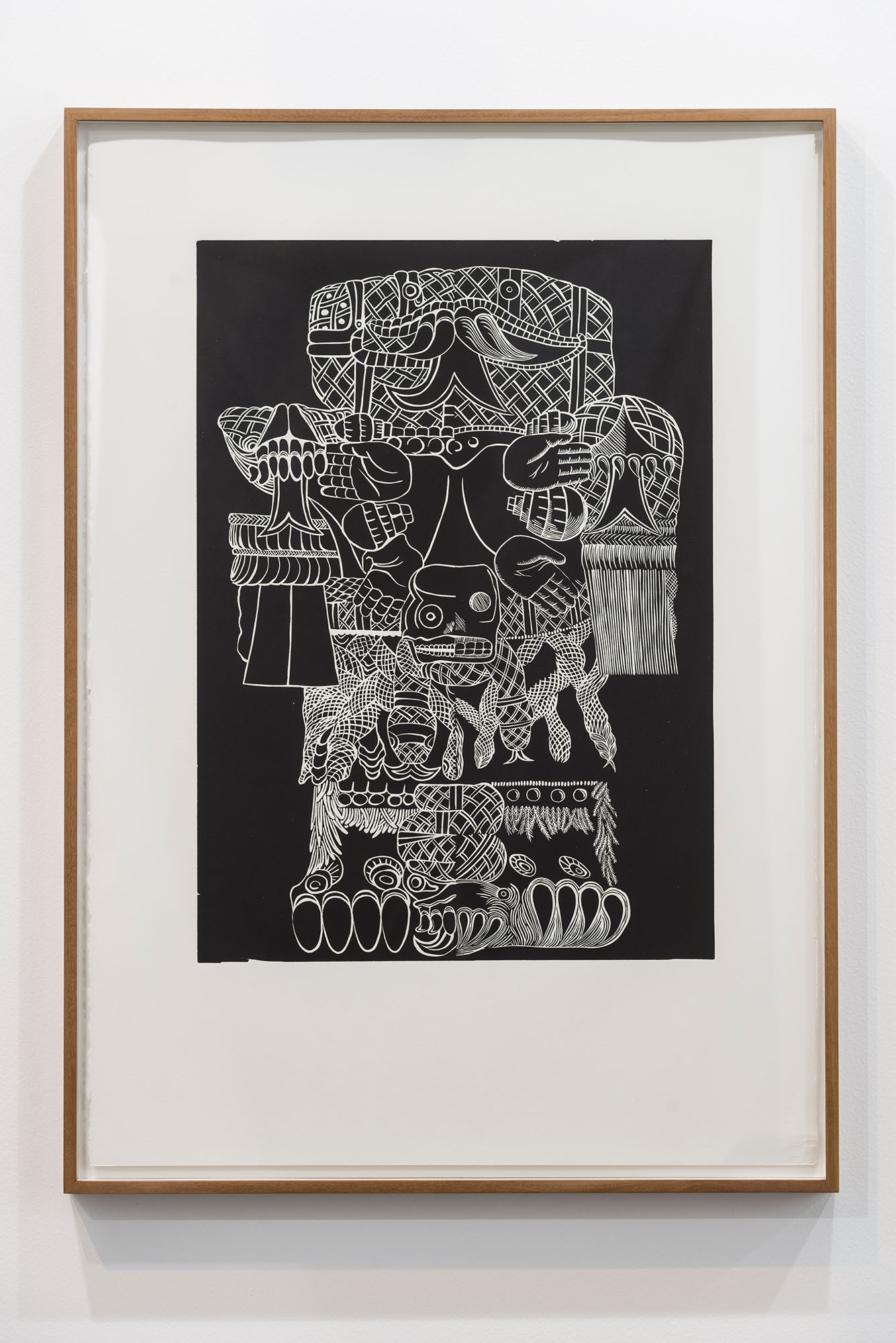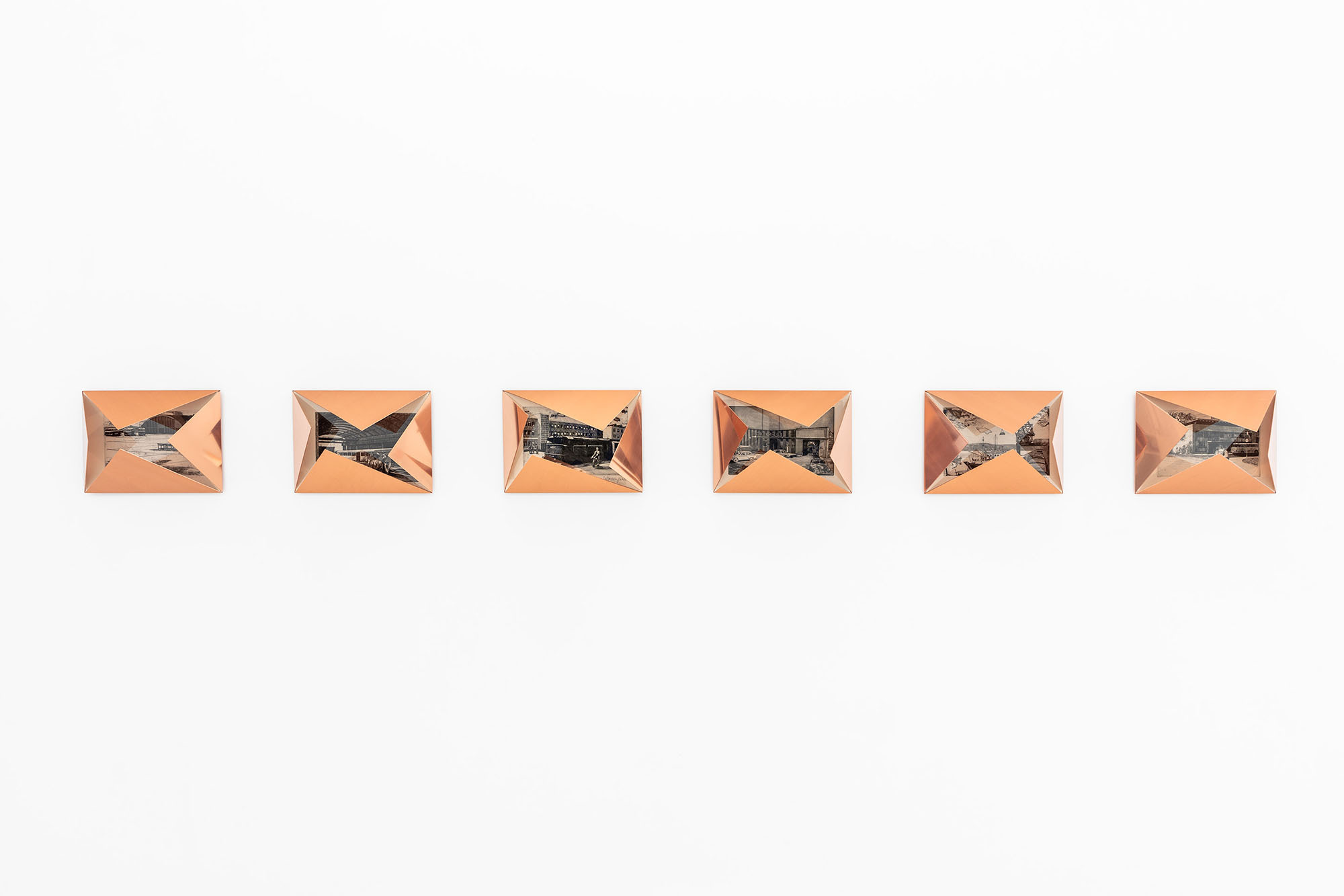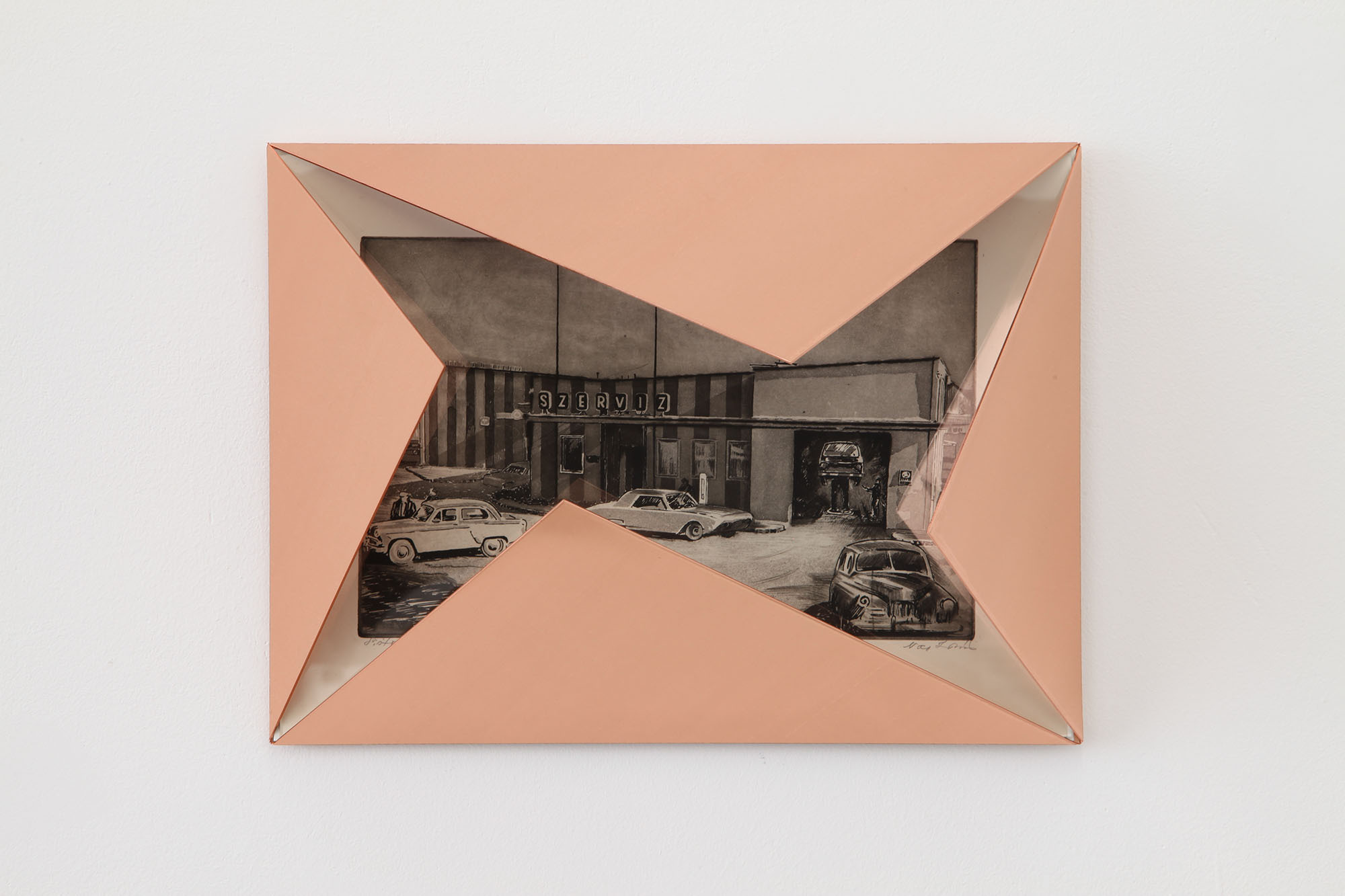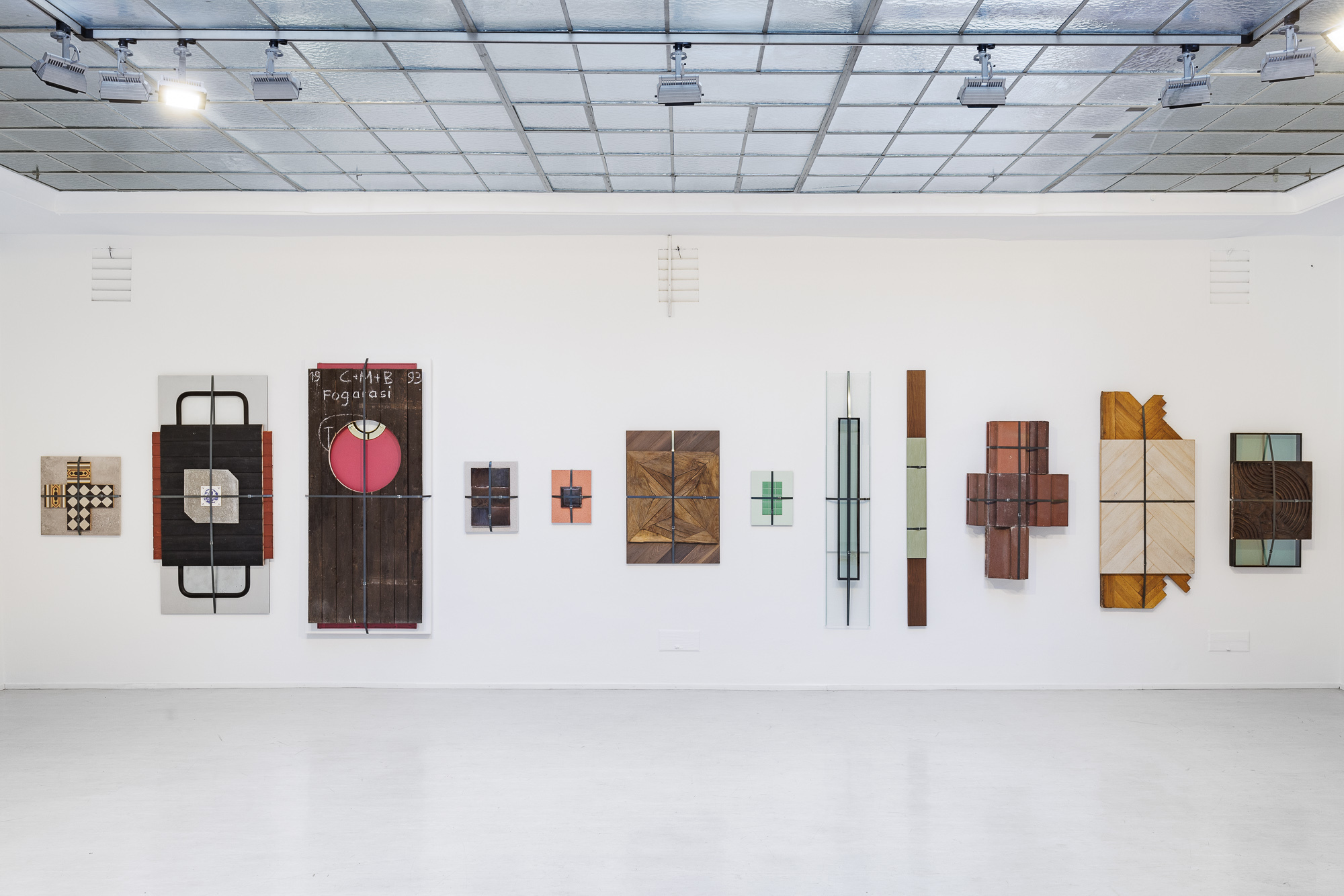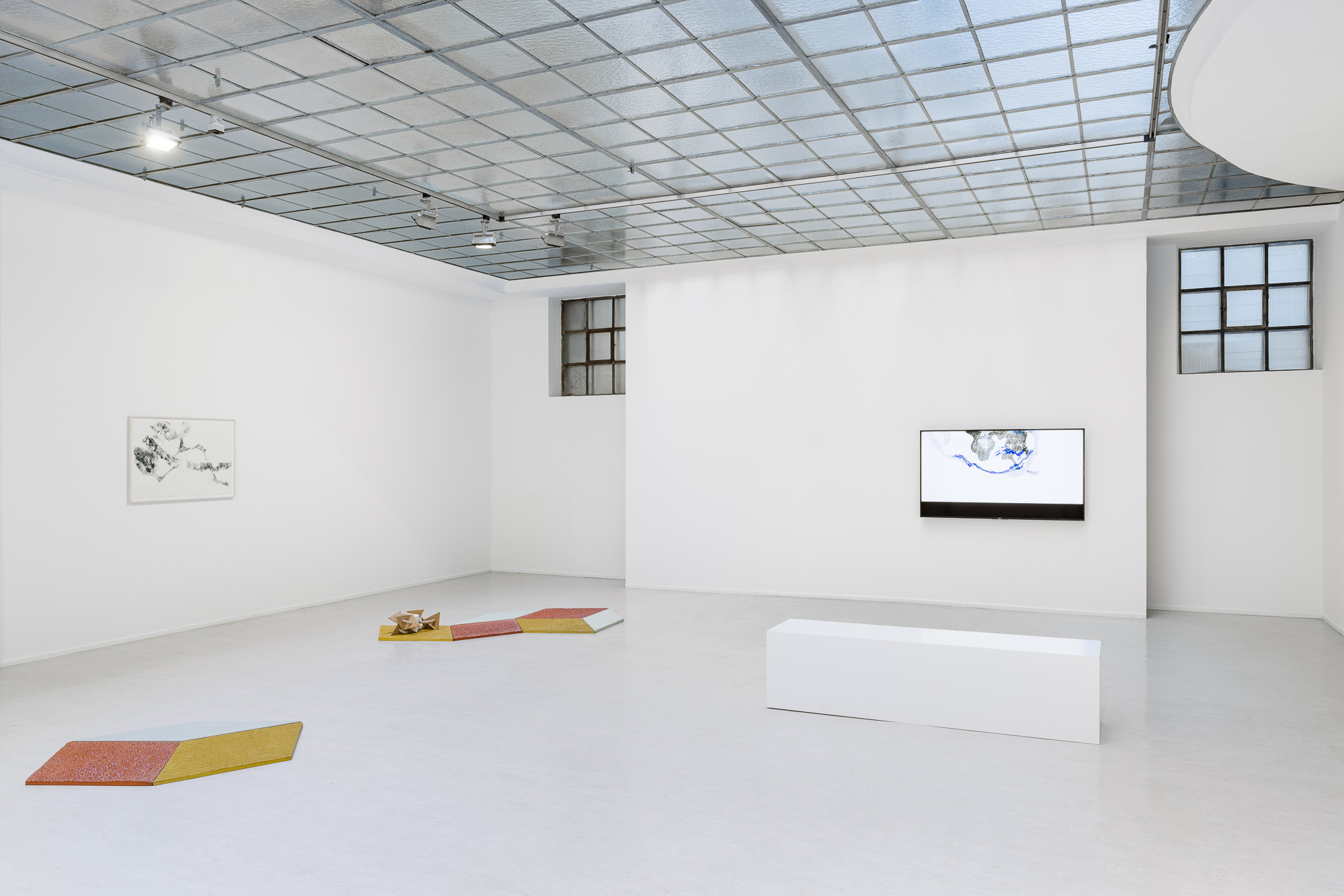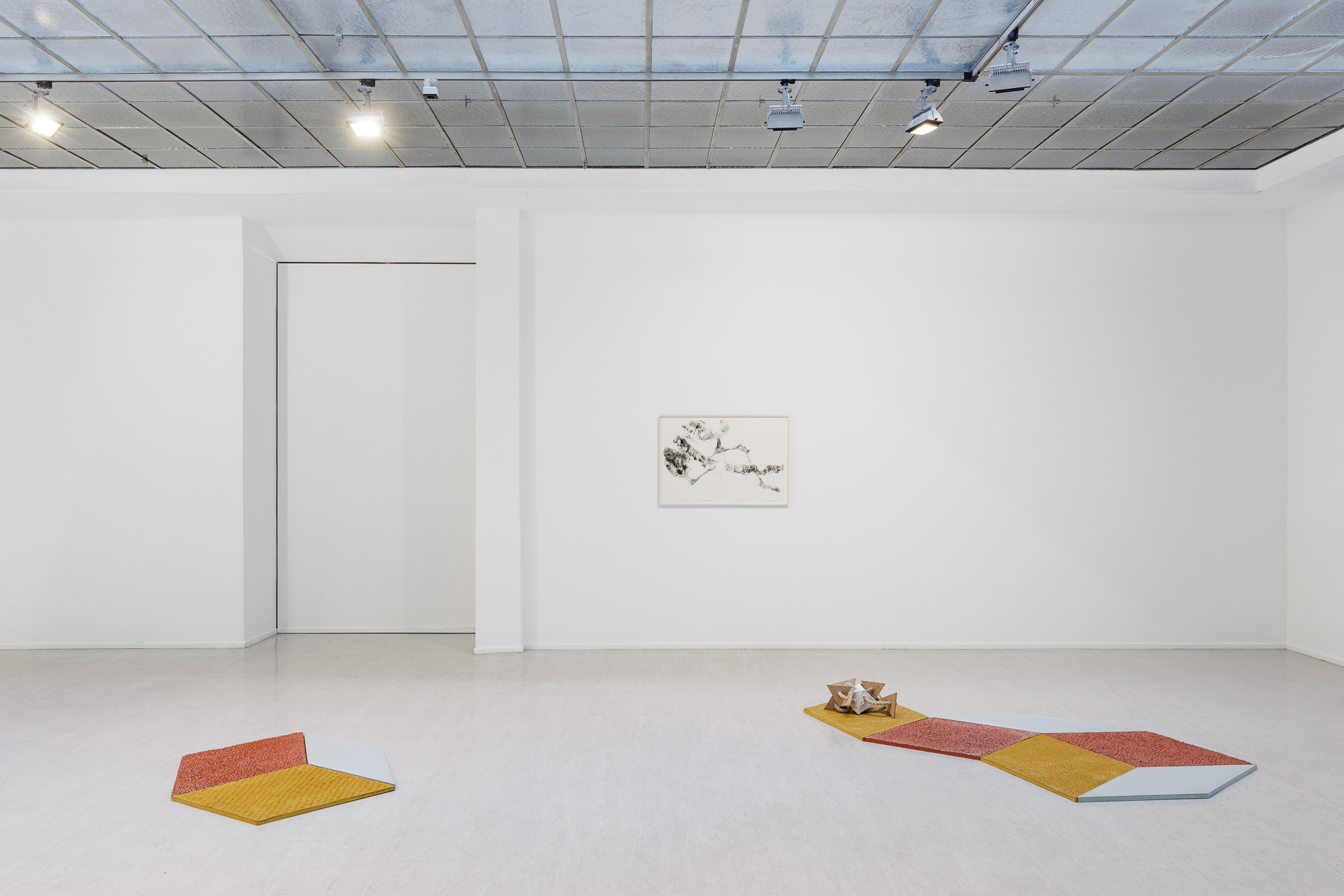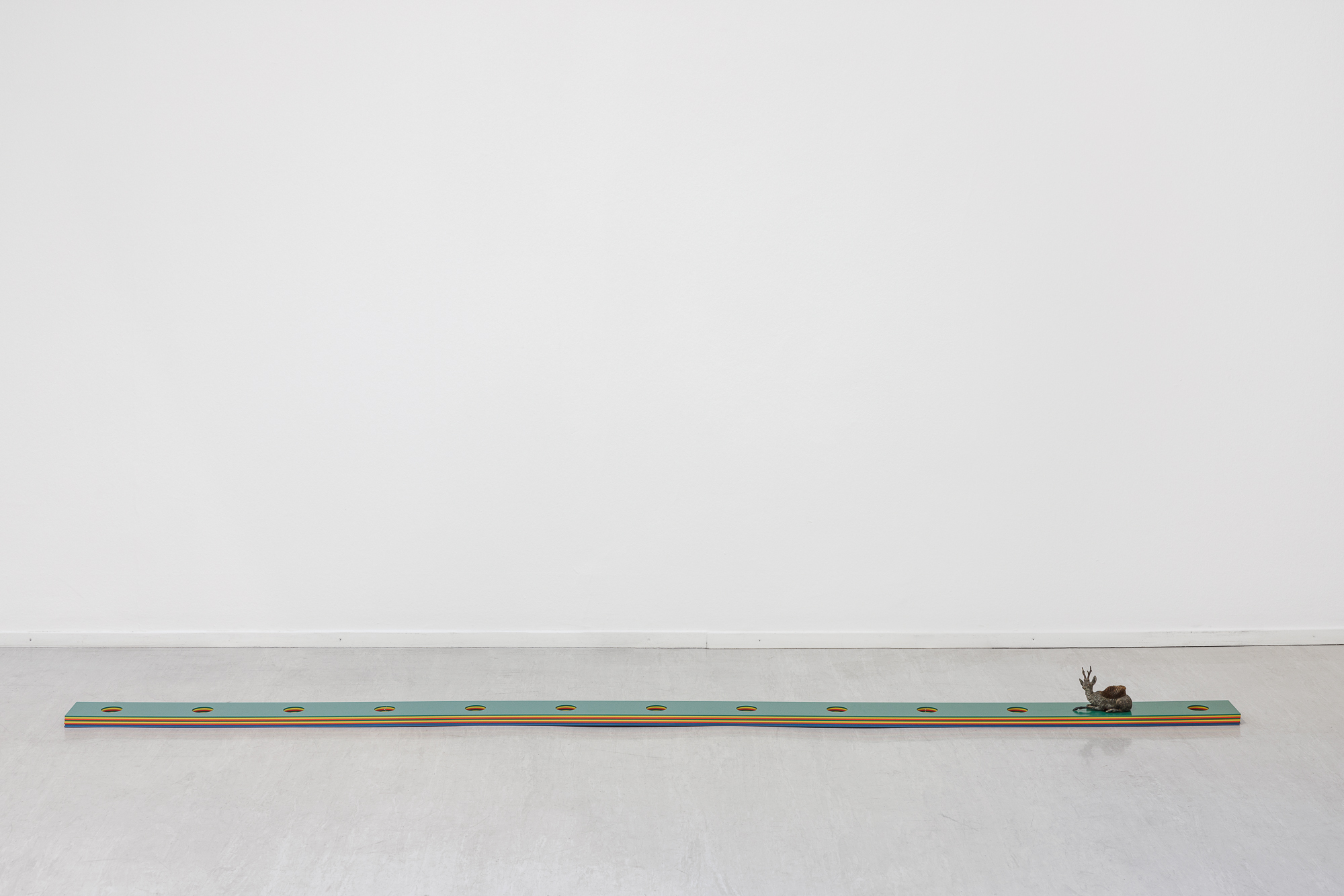—
Andreas Fogarasi and Mariana Castillo Deball
Five Ways of Telling Time
Five Ways of Telling Time presents sculptures, objects and videos by Mariana Castillo Deball and Andreas Fogarasi, in which processes of showing, uncovering, making visible again and engaging with transformation processes and their social, political and historical triggers play a central role. Starting from different thematic priorities, Fogarasi and Deball meet at many moments in their artistic practice: the exhibition seeks a sensitive dialogue between the works and illuminates these parallels. For Mariana Castillo Deball it is the first comprehensive presentation in Austria.
While Deball's starting point is often the work in and with archaeological and anthropological collections, in Fogarasi's case it is primarily the examination of architecture and the analysis of urban transformation processes that precede his works. Both begin with extensive research and analysis and translate these into formally reduced, coded and condensed visual languages. In addition, both artists move within the formal canon of contemporary art in a markedly reflective manner, addressing conceptual strategies as well as post-minimalist approaches in sculpture.
The artists' dialogue is structured by Deball's cross-room installation Tonalpohualli (2017), which runs throughout the gallery and along which visitors encounter the other works, including new “material portraits” and works from Fogarasi's Envelop series, works on paper by Deball, and two video works that are indicative of the artistic proximity but also the different approaches of the two.
A city like Vienna, which has been changing rapidly since the collapse of its socialist neighboring states after decades of stagnation, offers Fogarasi sufficient opportunities to study urban transformation processes and the mutual effects of social changes on the built environment and public space. In 2019 he presented his “material portraits” for the first time with the series Nine Buildings Stripped: he ensured components - surface cladding - of houses that were either redesigned or replaced by new buildings, tied them together with samples of the replacing materials with industrial packaging steel tape to form compact packages and hung them on the wall as images. They are portraits of transformation that, like a tilted picture, contain two identities and, in a paradoxical way, the past and the future. They are material, documentary and sculptural in one. The new works presented in the exhibition are freer in their conception: the tied-up materials no longer necessarily represent a specific building, but rather are typologically combined over time. The partial abandonment of the conceptual bracket of representing a specific building brings artistic freedom and emphasizes other sensual qualities always inherent in the hybrid material wall paintings. In these pictures the surface undergoes a kind of rehabilitation: it is seductive and eloquent, its colors, shapes and structures betray dreams and utopias of the time and the mental attitude that produced them. At the same time, they are reminiscent of images of early modernism, in which color and surface were freed from content for the first time and became an end in themselves, or of Minimal Art, since we have learned that every material has its own intrinsic value and is linked to a complex reference system. Not to forget that wood, stone, metal, ceramics, glass and plastics have their own origins and so a few million years of geological history are quickly combined in a tied package.
Another way of dealing with history and processes of transformation is the work of the Mexican artist Deball, who has been living in Berlin for many years, who often deals and negotiates with pre-Columbian history and the legacy of the advanced cultures of Central America against the background of current critical discourses such as the criticism of science and Postcolonial Studies.
So she dealt several times with illuminated manuscripts, so-called codices, of the Aztecs and Maya, most of which are still in European collections to this day. The sculptural installation Tonalpohualli refers to the Aztec calendar of the same name, which spans 260 days and shows the structure of the Aztec year in a square drawing. It is much more than a calendar: As a representation of the cosmic order and the world of gods, it played a central role in rituals, was consulted as an oracle and regulated all areas of life in society as a whole. Deball transfers the image of the Codex and the illustrated principle of order into the room, in an installation made of 20 industrially manufactured aluminum strips with 13 holes each. The structure reflects the division of the calendar into 20 13-day periods (Trecena), the colors symbolize the cardinal points. The length of the aluminum strips is 270 cm, a measure of length used in Aztec architecture and agriculture. Each Trecena is ruled by a different animal-shaped deity who sit as miniatures on the perforated metal strips connected with bolts. Like Fogarasi's material pictures, the structure is at the same time attached to its history and autonomous. With the translation of the Aztec picture calendar into a rational-abstract formal language, the artist builds a bridge from a past animated by deities and spirits to our present, from a pre-colonial to a post-colonial period.
The fact that the world of the gods was complex and varied and that it changed considerably over the centuries is expressed in three linocuts shown in the exhibition, which refer to the many ways of depicting Coatlicue, the goddess of the earth and death. Based on the original motifs, Deball transforms them into increasingly freer and more abstract forms.
Deball's interest in methods of reproduction and printing can also be found in Fogarasi, who has carried out a critical revision in his series Envelop (since 2019): Engraved Hungarian copper sheets from the 1960s are shown, which were in the then official style of socialist realism commissioned by the state and widespread by the state and have now disappeared from public visibility and esteem. The two series “Grand Socialist Constructions” and “Pictures from The Life of Hungarian Transport and Telecommunication” show Fogarasi's subtle play between showing and hiding but also his sensitivity in dealing with media and materials: the copper sheet of the display is reminiscent of the printing plates of the graphics.
In the last room, two videos are shown alternately on a monitor, Nobody was Tomorrow by Deball and a machine for by Fogarasi, both from 2007, in which they deal in very different ways with cultural institutions (library or cultural house) from the socialist era in Hungary and Serbia respectively.
Fogarasi's early video work already shows his interest in architectural surfaces, materials and forms that have been considered obsolete and discarded, as well as in the re-evaluation of buildings and their ideologies. The cultural centers of the socialist era are often empty today and are viewed as unloved relics of a bygone era. In a simple act of showing, the film conveys the progressive and socially utopian spirit of these institutions, which has been lost. The question of common places for culture and encounters is at least as relevant today as it was then.
Unlike Fogarasi's laconic documentarism, Deball's film is in the form of a dystopian science fiction story - it takes place after the disappearance of mankind - of the national library in Belgrade, a sprawling tree in the cultural center in the city of Cacak (Serbia) and the archaeological excavation of a Roman bath at the same place. All threads come together in the protagonist Nobody, a/withn aging acceleration machine.
Five Ways of Telling Time focuses on the inherent relationship to time in the works on view, presenting them as instruments, as five (or more) ways of describing the world.
Text: Bettina Spörr
Mariana Castillo Deball’s versatile practice explores the social relations that activate the differing meanings assigned to objects. Working along the margins of art, archaeology, anthropology and the natural sciences, her work draws on extensive research, tracing how epistemological systems interact to inform our shared identities and histories, in relation to the material world. Employing installation, performance, sculpture and printing, Deball’s work seeks to open a discourse with many institutions beyond the art world, to carve out how the ordering and archiving of historical information shapes individual and collective experience.
Mariana Castillo Deball (born 1975, Mexico City) lives and works in Berlin. She has been awarded with the Prix de Rome (2004), Zurich Art Prize (2012) and was nominated for the Preis der Nationalgalerie für junge Kunst (2013). Her work has been exhibited widely at institutions and museums internationally, including Centre Georges Pompidou, Paris; Hamburger Bahnhof – Museum für Gegenwart, Berlin; Stedelijk Museum, Amsterdam; Museum of Latin American Art (MOLAA), Long Beach; Institute of Contemporary Arts (ICA), London; Museu d’Art Contemporani de Barcelona (MACBA), Barcelona among others. She has taken part in numerous Bienales and major exhibitions including Documenta 14, Athens; 8th Berlin Biennale; Documenta 13, Kassel; 54th Venice Biennial, Venice; Manifesta 7, Trentino; 7th Shanghai Biennale, China, as well as her participation in the Mexican Pavilion at the upcoming 59th Venice Biennial.
Andreas Fogarasi (born 1977, Vienna) lives and works in Vienna. Particularly concerned with the act of showing and of representation, he analyses how places, cities, political ideas, or historic events become images and questions the role of culture in how the State regulates behaviour and identity. Formally informed by Minimal Art and Conceptual Art, Fogarasi’s works are at the same time documentary and autonomous sculptures. The documentary element is consciously fractured and rests on a precise balance between information and openness. The sculptural aspect is strongly architectural, often referencing iconic landmarks, commercial presentations or temporary forms of architecture such as stands at fairs, stage constructions, or pavilions.
Andreas Fogarasi has been awarded the Otto Mauer Prize in 2016 and won the Golden Lion for his exhibition in the Hungarian Pavilion at the 52nd Venice Biennale. His work has been presented at institutions in numerous countries: Kunsthalle Wien, Vienna; Museo Tamayo, Mexico City; Ludwig Museum, Budapest; New Museum, New York; Kunstverein für die Rheinlande und Westfalen, Düsseldorf; Muzej suvremene umjetnosti, Zagreb; CAC, Vilnius; Frankfurter Kunstverein, Frankfurt; and Palais de Tokyo, Paris.
Biography
1977 born in Vienna, lives and works in Vienna
Selected Solo Exhibitions
2025
City of Glass, tranzit.ro/Cluj, Romania
Weinstadt, Bierstadt, Wasserstadt, Lombardi—Kargl, Vienna
Cittá d'Acciaio, Galleria Massimo Ligreggi, Catania
2024
Cities, Gandy Gallery, Bratislava
2023
Figur, Kunstfenster Gnas, Gnas
Kyiv, Brussels, Budapest, Vintage Galéria, Budapest
Last Minutes, Kunsthaus Muerz, Mürzzuschlag (wit Markéta Othová)
Letting Do, Torula Artspace, Györ (with Adrienn Kiss)
1978, QUARTZ STUDIO, Turin
2028, vai - Vorarlberger Architektur Institut, Dornbirn
2022
Skin Calender, Budapest Gallery, Budapest
Five Ways of Telling Time, Georg Kargl Fine Arts, Vienna (with Mariana Castillo Deball)
2021
Up and Down, Vi Per Gallery, Prague
2020
MI, Vintage Galérie, Budapest (with Christian Kosmas Mayer)
2019
Nine Buildings, Stripped, Kunsthalle Wien, Vienna
Work, Galería Casado Santapau, Madrid
Vasarely Go Home, Galerie Florence Loewy, Paris
Kultur und Freizeit, Per Albin, Vienna (with Christoph Ruckhäberle)
2018
Production, FL Gallery, Milan
Kettő / Two, Vintage Galéria, Budapest
Monuments offerts, Galerie Thomas Bernard / Cortex Athletico, Paris
Black Concrete, Kunstforum Montafon, Schruns (with Martina Steckholzer)
2017
Culture and Free Time, Csili Cultural Center, Budapest
Exhibition/s, Georg Kargl Fine Arts, Vienna
Plan, Galéria mesta Bratislavy/Bratislava City Gallery, Bratislava
Copy, Kunstbuero, Vienna
2016
Sculpture, Proyectos Monclova, Mexico City
Book Launch, LAMOA - Los Angeles Museum of Art, Los Angeles
Modelle, Jesuitenfoyer, Vienna
2015
Installation, Tranzit, Iași (Rumania)
Video, Galería Casado Santapau, Madrid
Photography, amt _ project, Bratislava
Tracks and Traces, City Museum, Belgrade (with Sasa Tkacenko)
2014
Black Earth, MAK Center for Art and Architecture, Los Angeles (mit Oscar Tuazon)
Vasarely Go Home, GFZK – Museum of Contemporary Art, Leipzig
Vasarely Go Home, Museum Haus Konstruktiv, Zurich
1988, Galeria Vermelho, São Paulo
2013
Année Le Nôtre, Galerie Cortex Athletico, Paris
Kiosk (Buda), Park Galéria, Budapest
Kiosk (Buda), Georg Kargl Permanent, Viennaa
2012
2018, Prefix Institute of Contemporary Art, Toronto
180°, Neuer Kunstverein Wien, Vienna (with Mladen Bizumic)
Vasarely Go Home, Trafó, Budapest
Vasarely Go Home, Galerie Cortex Athletico, Bordeaux
Épitészet / Architecture, Liget Galéria, Budapest
Headlines and Small Print, Galerija Nova, Zagreb (with Maryam Jafri)
2011
La Ciudad de Color / Vasarely Go Home, Museo Nacional Centro de Arte Reina Sofia, Madrid
Constructing / Dismantling, Centro Andaluz de Arte Contemporáneo, Sevilla
Solo presentation, Galerie Cortex Athletico, Armory Show, New York
2010
Georgetown, Georg Kargl Fine Arts, Vienna
1998, Ludwig Forum für Internationale Kunst, Aachen
2008
Fairview, Lombard-Freid Projects, New York
Support Surface, Galerie Cortex Athletico, Bordeaux
2008, MAK, Vienna
Információ, Ernst Museum, Budapest
Kultur und Freizeit, Grazer Kunstverein, Graz
2007
Kultur und Freizeit, Hungarian Pavilion, 52. Biennale di Venezia, Venice
2006
Norden, Georg Kargl Box, Vienna
2005
Westen (aka Osten), Grazer Kunstverein, Graz
Süden, Porschehof/Salzburger Kunstverein, Salzburg
2004
A ist der Name für ein Modell / Étrangement proche, Liget Galéria, Budapest
2003
ABCity (The Player), Trafó, Budapest (curator)
Welcome to Regions, Display Gallery, Prague
A ist der Name für ein Modell / Étrangement proche, Offspace, Vienna
2002
Kultúrapark, Stúdió Galéria, Budapest
Culture Park, Galerie 5020, Salzburg
1999
Modell Ambient (Bunte Laune), Transit VZW, Mechelen
Selected Group Exhibitions
2025
Il Cerchio Schiacciato – nel tempo della Globalizzazione e degli Equilibri Instabili, Fondazione Mudima, Milan
Zwischen Stufen, Phasen, Stopps (TUN FÜR TUN), Kunstverein Eisenstadt, Eisenstadt
Between Spheres,Art and Science – Works from the Collection of the Central Bank of Hungary (MNB), Várkert Bazár – Ybl6 Art Space, Budapest
2024
Clubs der Zukunft | Clubs of the future, Kunstverein am Rosa-Luxemburg-Platz, Berlin
Loose Ends, Modest Common, Los Angeles
Täterätää! Back with a Bang! KEX Reopens, Kunsthalle Exnergasse, Vienna
2023
Handle with Care, Ludwig Museum, Budapest
Coincidence of Wants, Wien Museum MUSA, Vienna
Humans and Demons, Steirischer Herbst, Graz
Schau...9, Kunsthaus Kollitsch, Klagenfurt
Here and Now II - Vienna Sculpture 2022, Neuer Kunstverein Wien, Vienna
Wir legen alles Geld zusammen, Kunstverein Schattendorf, Schattendorf
Verzweigt. Bäume in Fotografien der Sammlung SpallArt, Städtische Galerie Rosenheim, Rosenheim
Spectacular City, Holocaust Memorial Center, Budapest
2022
On/Off the Grid, Jecza Gallery, Timisoara
Wiener Freiheit, Galerie 3, Klagenfurt
I Had a Dog and a Cat, curated by Hana Ostan Ozbolt, Georg Kargl Fine Arts, Vienna
Lost in Space, Raum, Ding und Figur – Entwicklungen innerhalb der Skulptur seit 1945, Museum Liaunig, Neuhaus/Suha
2021
CELOK JE MENŠÍ AKO SÚČET JEHO ČASTÍ, City Gallery Bratislava, Bratislava
Mäusebunker & Hygieneinstitut. Experimental Setup BERLIN Architetture di G+M Hänska I Fehling + Gogel, Sala Espositivo Gino Valle, Venice
Haus Wien, Vienna
Zwischen den Dingen, Volkskundemuseum, Vienna
PROSTESTFormen, www.paraflows.at (online)
Frech und Frei, MAK - Museum für Angewandte Kunst Wien, Vienna
SHOWING STYRIA: what will be. Towards the Plurality of Futures, STEIERMARKSCHAU / Kunst Haus Graz, Graz
2020
Would You Be Available…, Georg Kargl Permanent, Vienna
Gallery for Peace, Umetnostna galerija Maribor
Trafó Galéria, Budapest
2019
40.000 Ein Museum der Neugier, 14. Fellbach Triennale, Fellbach
Im Raum die Zeit lesen, MUMOK, Vienna
Iparterv 50+, Ludwig Museum, Budapest
Presencia lúcida, Colección ESPAC, Mexico City
Hommage à 1969, Vasarely Museum, Budapest
Panel, MODEM, Debrecen
Textus Ex Machina, aqb Project Space, Budapest
2018
para inglês ver, Post Ford Palace, Porto
Into the City, Museum Moderner Kunst Kärnten, Klagenfurt
Universe of Relations, ZARYA Center for Contemporary Art, Vladivostok
Seeing artists voices, Metro, Porto
Stúdió’18 - Szalon, Hungarian University of Fine Arts, Budapest
Reduction, Georg Kargl Fine Arts, Vienna
Ist Eros der eben jetzt von mir beobachtete Planet?, Kunstverein am Rosa-Luxemburg-Platz, Berlin
2017
Wanderings, Galeria Cristina Guerra, Lisbon
Traces of Time, Leopold Museum, Vienna
OFF Biennale, Budapest
Gazdálkodj okosan! / Economize!, Ludwig Museum, Budapest
Ice Floe – The institutional issue, National Museum for the Visual Arts, Montevideo
Abstract Hungary, Künstlerhaus Halle für Kunst & Medien, Graz
10 years old, Fondazione Fotografia Modena, Modena
Save As... – What Will Remain of New Media Art?, Ludwig Museum, Budapest
LAMOA presents: Mülheim/Ruhr und die 1970er-Jahre, Kunstmuseum Mülheim an der Ruhr
moi non moi, Wiener Art Foundation in Athens, Athens
2016
The Errors of Beauty, National Gallery, Sofia
The Language of Things – Material Hi/Stories from the Collection, 21er Haus, Vienna
Grenzen der Geste, Galerie der Hochschule für Grafik und Buchkunst, Leipzig
The Past is the Past, Galerie Thomas Bernard / Cortex Athletico, Paris
Cartography of Artist Solidarity, tranzit.hu, Budapest
Art Capital, Müvészet Malom, Szentendre (Hungary)
2015
Destination Vienna, Kunsthalle Wien, Vienna
Nadezhda – The Hope Principle, special project for the 6th Moscow Biennial, Moskow
Wohin gehen wir? Videokunst zur Stadtgesellschaft, Motorenhalle, Dresden
Transparency, Georg Kargl Fine Arts, Vienna
Inside Out - Not So White Cube, Mestna Galerija, Ljubljana
Sector 17, Galerie Martin Janda, Vienna
[ ], Schwarzwaldallee, Basel
Close Up, etc. galerie, Prague
El Presente en el Pasado, Centro Andaluz de Arte Contemporáneo, Sevilla
Vienna Biennale – 24/7. the human condition, MAK, Vienna
Der Raum nach dem Raum, kunsthaus muerz, Mürzzuschlag
2014
I Know Not to Know, Georg Kargl Fine Arts, Vienna
El Teatro del Mundo, Museo Tamayo Arte Contemporáneo, Mexico City
Report on the Construction of a Spaceship Module, New Museum, New York
Turning Points, Hungarian National Gallery, Budapest
Notes from Underground, Baba Vasa’s Cellar, Shabla (Bulgaria)
Frisch eingetroffen – Neuankäufe Fotografie, Landesgalerie Linz des OÖ. Landesmuseums, Linz
Texte in der Kunst, Georg Kargl Fine Arts, Vienna
Urbane Perspektiven - Dark City, Schafhof - Europäisches Künstlerhaus Oberbayern, Freising
Interieurs, Landesgalerie Linz des OÖ. Landesmuseums, Linz
2013
Word+Work, Galerie nächst St. Stephan Rosemarie Schwarzwälder, Vienna
Jetztzeit (El tiempo del ahora), Centre d’Art la Panera, Lleida (Spain)
Modern Architecture Works, Vivacom Arthall, Sofia
Cinematic Scope, Georg Kargl Fine Arts, Vienna
De belles sculptures contemporaines – la collection du Frac des Pays de la Loire, Hab Galerie, Nantes
Conceptualism Today – Conceptual Art in Hungary since the beginning of the 1990s, Paksi Képtár, Paks
Die Sammlung 2 / The Collection 2, 21er Haus, Vienna
2012
Ça & Là / This & There, Fondation Ricard, Paris
Montag ist erst übermorgen, Akademie der bildenden Künste, Vienna
Gallery by Night, Stúdió Galéria, Budapest
Bleibende Werte? /Enduring Value?, Kunsthaus, Bregenz
Demnächst, Galerie 5020, Salzburg
Die Sammlung / The Collection, 21er Haus, Vienna
State of Affairs, amt _ project, Bratislava
2011
Erschaute Bauten / Envisioned Buildings, MAK, Vienna
Beziehungsarbeit, Künstlerhaus, Vienna
Monument Valley – Jaegerspris Revisited, UFO presents, Berlin
5x5 2011, Espai d´art contemporani de Castelló, Castelló (Spain)
Shift and Flow, Dorsky Gallery Curatorial Programs, New York
alter///scrinium – Ten Theses of Architecture, 9th International Film Festival, Vladivostok
In Between, Austria Contemporary, CAC, Vilnius
Magáért beszél, Hungarian National Gallery, Budapest
Where is my Place, Fondazione Bevilacqua La Masa, Venice
Passion of an Ornithologist. On Myth Making, BWA Sokol, Nowy Sacz (Poland)
NeoSI #2: neue Situationistische Inter......nationale, Kunstraum Schattendorf (Austria)
Public Folklore, Grazer Kunstverein, Graz
2010
Related Spaces, Ernst Museum, Budapest
There has been no Future, there will be no Past, ISCP, New York
Architecture and Context – Breuer in Pécs, Fuga – Budapest Center of Architecture, Budapest
La Ciudad Interpretada, Public Space/CGAC, Santiago de Compostela
Paisatge. Paisatge?, Angels Barcelona
Over the Counter, Mücsarnok, Budapest
Le présent du passé, FRAC des Pays de la Loire, Gétigné-Clisson
Unmistakable Sentences, Ludwig Museum, Budapest
Transitland, Space Gallery, Bratislava
Art Always has its Consequences, (former) Museum of Contemporary Art, Zagreb
Arrivals and Departures_Europe, Mole Vanvitelliana, Ancona
A Pair of Left Shoes, MSU – Museum of Contemporary Art, Zagreb
Fine Line, Georg Kargl Fine Arts, Vienna
2009
TypoPass, Labor, Budapest
History, Memory, Identity, Fondazione Cassa di Risparmio di Modena
BC 21 Art Award, Augarten Contemporary, Vienna
A Pair of Left Shoes, Kunstmuseum Bochum, Bochum
Új szerzemények – rég nem látott művek, Ludwig Museum, Budapest
Reduction&Suspense, Magazin4 – Bregenzer Kunstverein, Bregenz
El Pasado en el Presente, Laboral Centro de Arte, Gijon
Reading the City, ev+a Exhibition of Visual Art, Limerick
Fifty Fifty, Wien Museum Karlsplatz, Vienna
Figure/Ground, Transit, Mechelen
Rewind, Fast Forward – Video Art from the Collection, Neue Galerie, Graz
Expanded Box – Cinema, ARCO, Madrid
2008
Moirés, Kunstraum der Universität Lüneburg, Lüneburg
Colección Pecar. Atemporalidad, Museo de Arte Moderno y Contemporáneo, Santander
In Between, Austria Contemporary, Genia Schreiber University Art Gallery, Tel Aviv
Modern Ruin, Queensland Art Gallery / Gallery of Modern Art, Brisbane
6th International Biennale, Gyumri (Armenia)
Art Unlimited, Art 39 Basel
50, Studio Galeria, Budapest
Islands+Ghettos, Heidelberger Kunstverein
Scene Missing, Georg Kargl Fine Arts, Vienna
Scene Missing, Galerie Thomas Schulte, Berlin
Phantasies of the Beginning, Billboard Gallery, Bratislava
Undiszipliniert, Kunsthalle Exnergasse, Vienna
Am Puls der Stadt – 2000 Jahre Karlsplatz, Wien Museum Karlsplatz, Vienna
2007
Cine y casi cine, Centro de Arte Reina Sofia, Madrid
Kapitaler Glanz, Kunstverein für die Rheinlande und Westfalen, Düsseldorf
Models for Tomorrow: Cologne, European Kunsthalle, Cologne
2006
This Land is my Land, NGBK, Berlin
Center, MAK Center, Los Angeles
wood, photographs, aluminium plate, LED, table, book, silkscreen, personal computer, monitor, web connection, nivea cream, video, paper, graphite, pencil, acrylic, Galerie Jocelyn Wolff, Paris
How to do Things?, Kunstraum Kreuzberg / Bethanien, Berlin
This Land is my Land, Kunsthalle Nürnberg, Nuremberg
Der Raum zwischen zwei Bildern, Fotohof, Salzburg
Geschichte(n) vor Ort, Volkertviertel, Vienna
How to do Things?, Trafó, Budapest
2005
Re:Modern, Künstlerhaus, Vienna
Brutal Ornamental, Galerie Kosak Hall, Vienna
Reading in Absence, Trafó, Budapest
Utopie : Freiheit, Kunsthalle Exnergasse, Vienna
Alice Creischer/Andreas Siekmann, Andreas Fogarasi, Dorit Margreiter, Kunstraum Lakeside, Klagenfurt (permanent)
Storyboards – Trapped in the escape, Vector Gallery, Iași (Rumania)
citysellingcitytelling, Sparwasser HQ, Berlin
2004
Images of Violence/Violence of Images, Biennale of Young Artists, Bucharest
Living Room, Kunsthalle Exnergasse, Vienna
Wiener Linien, Wien Museum Karlsplatz, Vienna
Video as Urban Condition, Austrian Cultural Forum, London
Formate – (re-)constructing the city, Galeria Noua, Bukarest
2003
Gegeben sind... Konstruktion und Situation, Galerie im Taxispalais, Innsbruck
Balkan Konsulat proudly presents: Budapest, Rotor, Graz
GNS, Palais de Tokyo, Paris
Gravitation, Moszkva tér, Budapest
Grosser Sommer an der Thaya, Drosendorf
2002
Site-Seeing: Disneyfication of Cities?, Künstlerhaus, Vienna
Evidence, Essor Gallery Project Space, London
Manifesta 4, Frankfurter Kunstverein, Frankfurt/Main
Double Bind, ATA Center for Contemporary Art, Sofia
Gallery by Night, Stúdió Galéria, Budapest
2001
Szerviz, Mücsarnok/Kunsthalle, Budapest
Real presence, Studentski Kulturni Centar, Belgrade
A table, an office, a building..., Semperdepot, Vienna
January Show, Passagegalerie Künstlerhaus, Vienna
2000
block, Apex Art, New York
99/00, Semperdepot, Vienna
1998
Clarice Works, Zentnerstrasse 18, Munich
1997
Új stúdiósok, Duna Galéria, Budapest
1995
Odyssee today, University of Athens, Athens
Odyssee today, Depot, Vienna
Videos
Inquiry
Please leave your message below.

